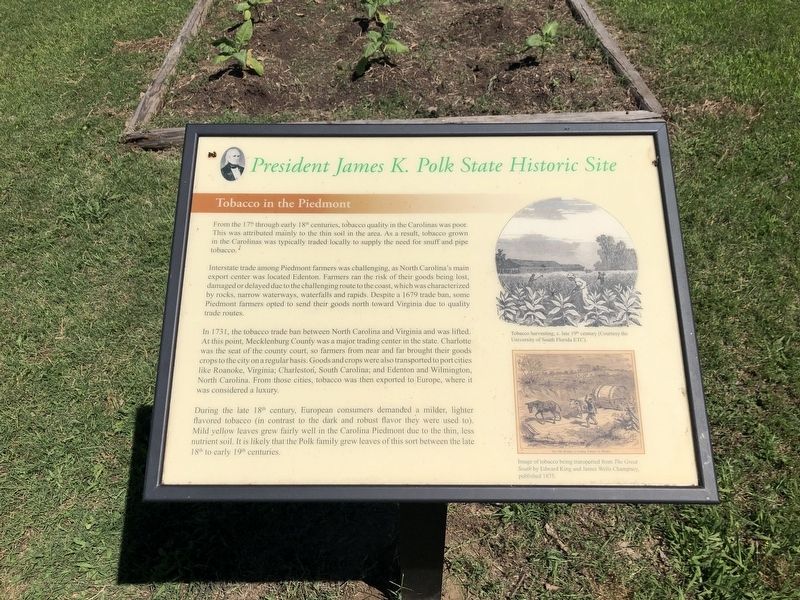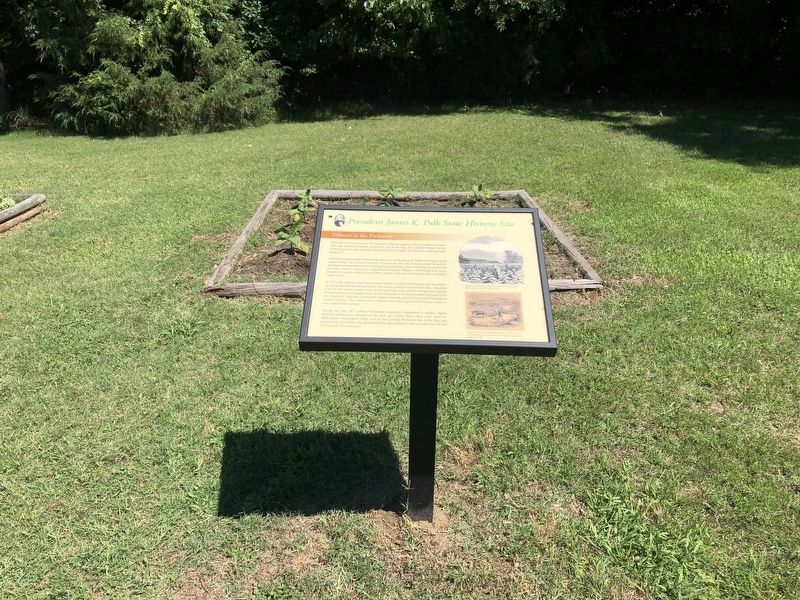Tobacco in the Piedmont
President James K. Polk State Historic Site
From the 17th through early 18th centuries, tobacco quality in the Carolinas was poor. This was attributed mainly to the thin soil in the area. As a result, tobacco grown in the Carolinas was typically traded locally to supply the need for snuff and pipe tobacco.
Interstate trade among Piedmont farmers was challenging, as North Carolina's main export center was located Edenton. Farmers ran the risk of their goods being lost, damaged or delayed due to the challenging route to the coast, which was characterized by rocks, narrow waterways, waterfalls and rapids. Despite a 1679 trade ban, some Piedmont farmers opted to send their goods north toward Virginia due to quality trade routes.
In 1731, the tobacco trade ban between North Carolina and Virginia and was lifted. At this time, Mecklenburg County was a major trading center in the state. Charlotte was the seat of the county court, so farmers from near and far brought their goods crops to the city on a regular basis. Goods and crops were also transported to port cities like Roanoke, Virginia; Charleston, South Carolina; and Edenton and Wilmington, North Carolina. From those cities, tobacco was then exported to Europe, where it was considered a luxury.
During the 18th century, European consumers demanded a milder, lighter flavored tobacco (in contrast to the dark and
robust flavor they were used to). Mild yellow leaves grew fairly well in the Carolina Piedmont due to the thin, less nutrient soil. It is likely that the Polk family grew leaves of this sort between the late 18th to early 19th centuries.Erected by North Carolina Division of Parks.
Topics and series. This historical marker is listed in these topic lists: Agriculture • Colonial Era • Settlements & Settlers. In addition, it is included in the Former U.S. Presidents: #11 James K. Polk series list. A significant historical year for this entry is 1679.
Location. 35° 4.699′ N, 80° 52.931′ W. Marker is in Pineville, North Carolina, in Mecklenburg County. Marker is on James K. Polk Road (County Road 3640) 0.1 miles east of Lancaster Highway, on the left when traveling east. Touch for map. Marker is at or near this postal address: 12031 Lancaster Hwy, Pineville NC 28134, United States of America. Touch for directions.
Other nearby markers. At least 8 other markers are within walking distance of this marker. Cotton on the Polk Farm (here, next to this marker); The President James K. Polk State Historic Site (a few steps from this marker); The Polk Farm (within shouting distance of this marker); President James K. Polk S.H.S. (within shouting distance of this marker); Polk Family Cemetery (about 400 feet away, measured in a direct line); James Knox Polk Birthplace
Credits. This page was last revised on June 22, 2022. It was originally submitted on June 22, 2021, by Devry Becker Jones of Washington, District of Columbia. This page has been viewed 299 times since then and 38 times this year. Photos: 1, 2. submitted on June 22, 2021, by Devry Becker Jones of Washington, District of Columbia.

